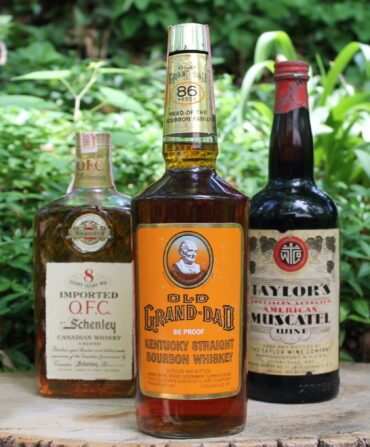Tiki drinks might get a bad rap these days, but they’ve always mattered to cocktail scholar Jeff “Beachbum” Berry. Over the past decade, the New Orleans–based Berry has written some of the definitive books on the category, including the newly released Potions of the Caribbean. By mining tiki archives for long-lost recipes and uncovering the secret histories behind the classics, he makes a convincing case that there’s more to tiki than overly sweet, fluorescent beach drinks. Now he’s gearing up to open his own bar in the Crescent City—the rumored birthplace of enigmatic tiki pioneer Don the Beachcomber.
Do your friends call you
Beachbum?
Either that or just Bum.
So why should we care
about tiki?
I think the reason tiki keeps coming back is that it’s like a mini-vacation. You get to escape for a few hours, and you don’t need to buy a plane ticket. Most of the good tiki bars don’t have windows. Also, the tiki craze was, I think, the greatest, longest-lived, and most interesting cocktail trend in American history. Tiki drinks are more complex and layered than basic pre-Prohibition cocktails. Those drinks might have three ingredients, but a tiki drink can have eight or twelve that are intricately balanced.
What do people get wrong about tiki?
The most common misconception is that tiki drinks are sweet, slushy, and horrible. When cocktails began to go out of style in the 1970s, the tiki bars that made their own syrups and liqueurs and juices went broke. The places that survived were using sloppy recipes and cheap ingredients, but people kept going because they wanted that vacation.
What ingredients should be on any well-stocked tiki bar?
Tiki drinks are basically Caribbean drinks, and the bedrock ingredients of all Caribbean drinks are rum, lime, and sugar. If you have those things, you’re on your way. You want a dry white Cuban-style rum, like Bacardi. And then you want a good dark Jamaica rum, like Myers’s. For a mai tai, you’ll want rhum agricole, which is made from fresh-pressed cane juice. Another secret weapon is demerara rum, from Guyana. It has this smoky, charred-wood, almost gunpowdery taste. It’s what I thought rum tasted like when I was a kid watching pirate movies. A little dash of that in a drink really makes it.








